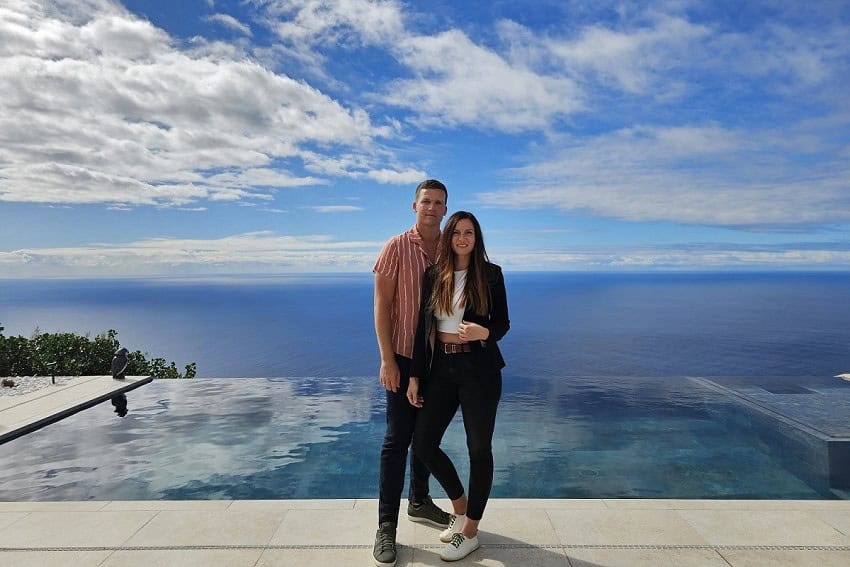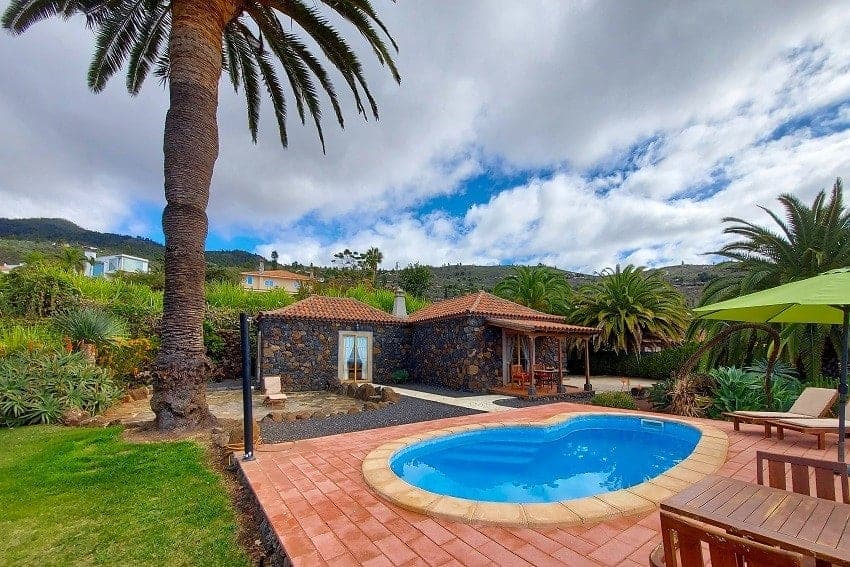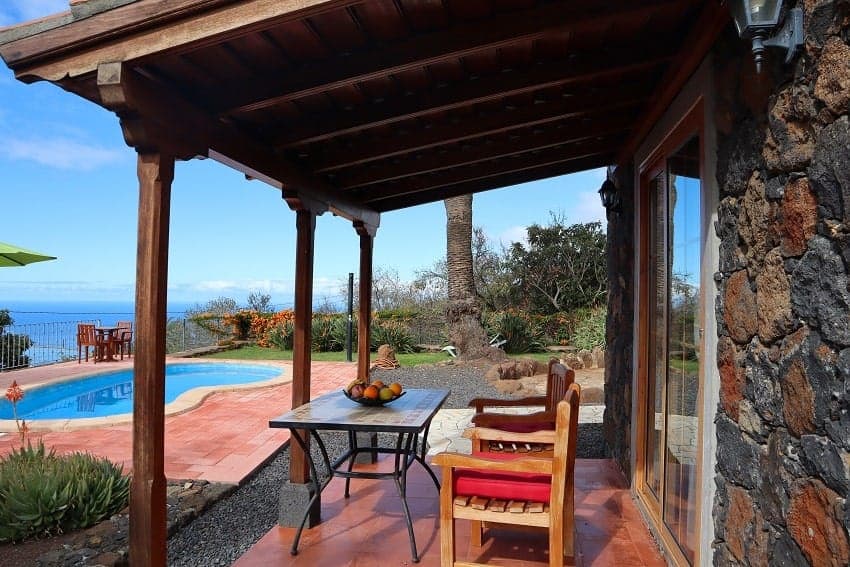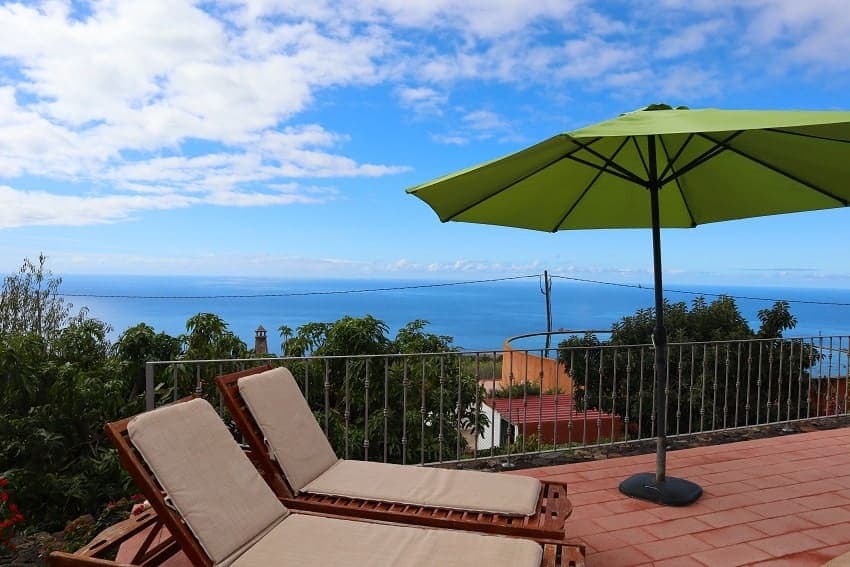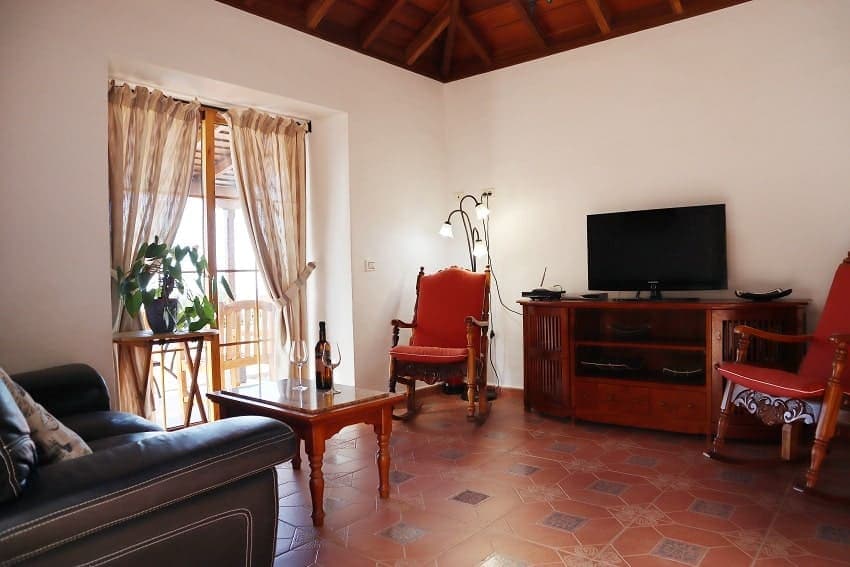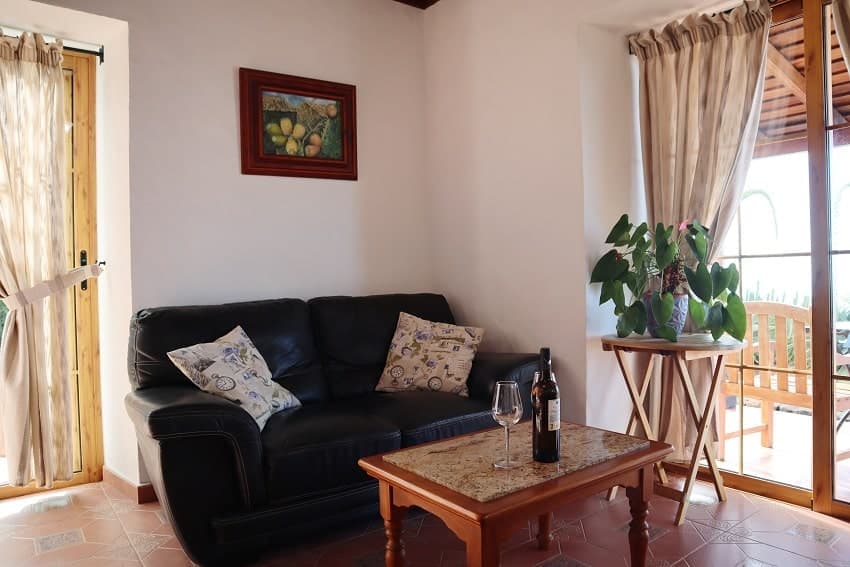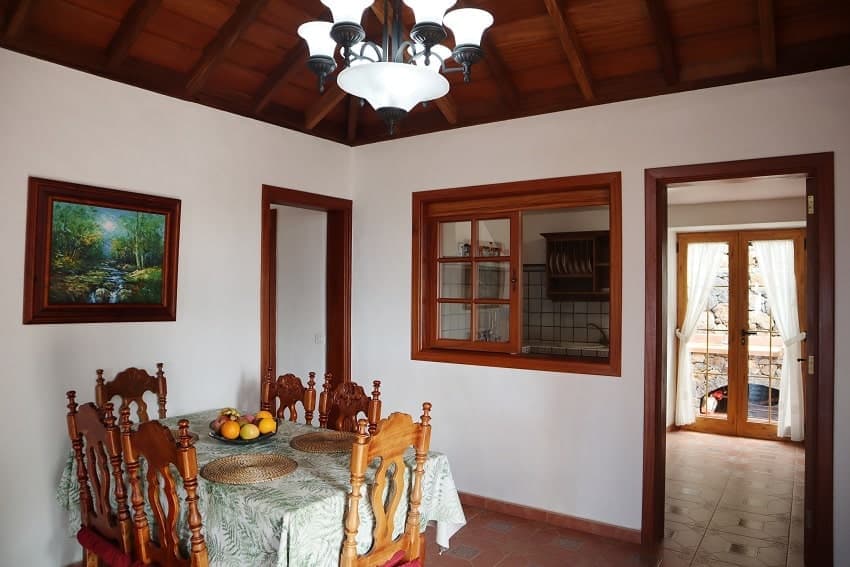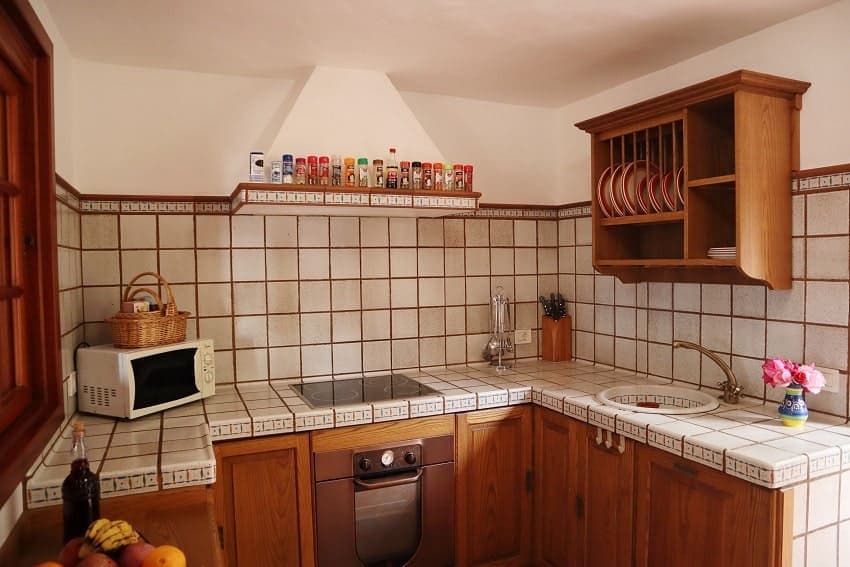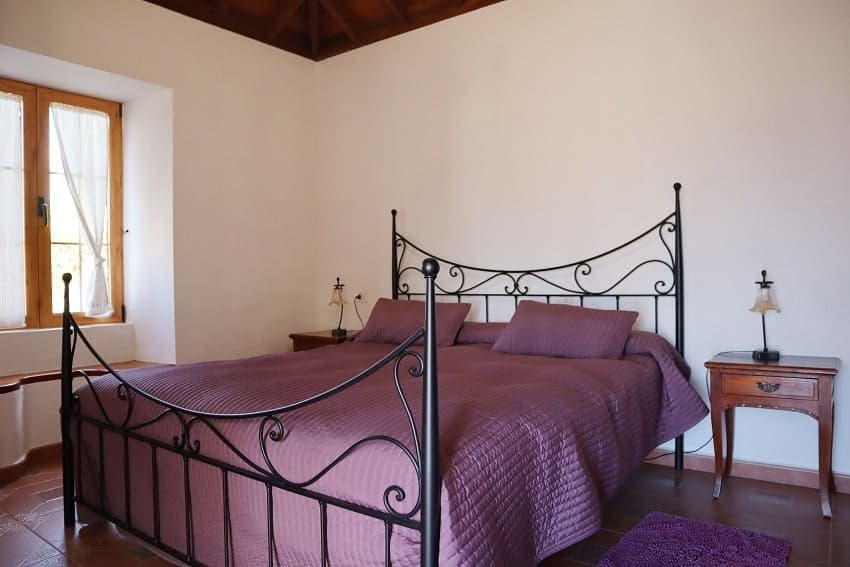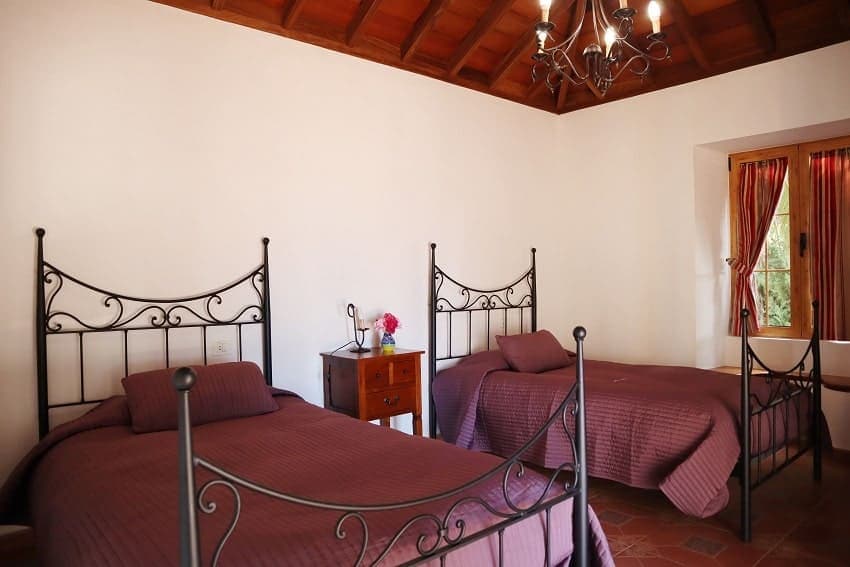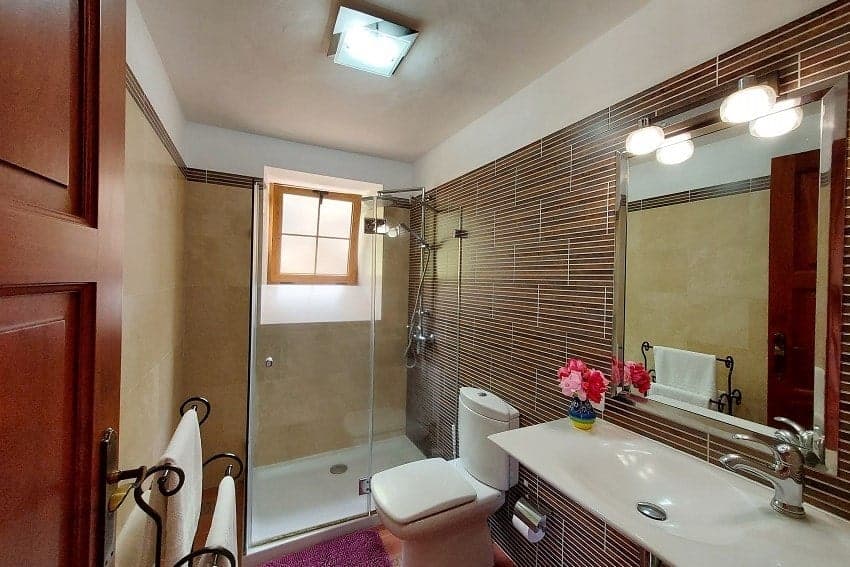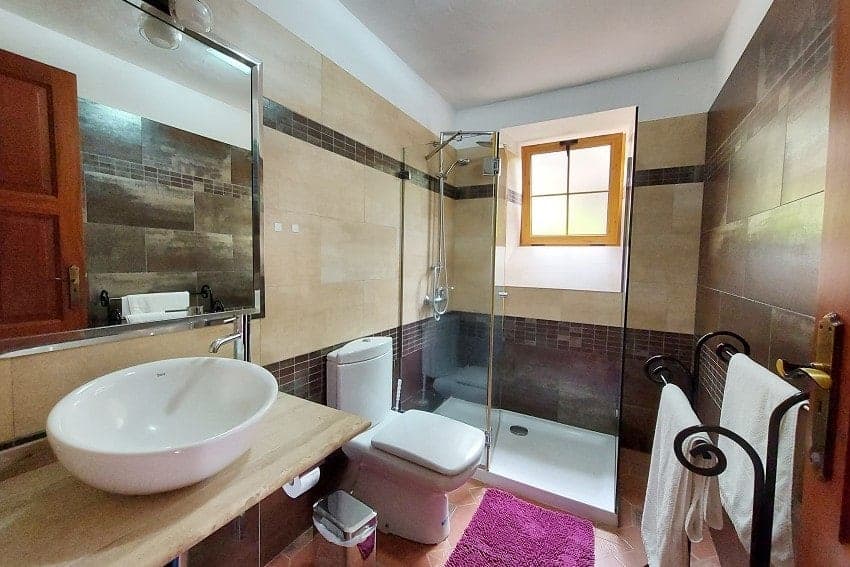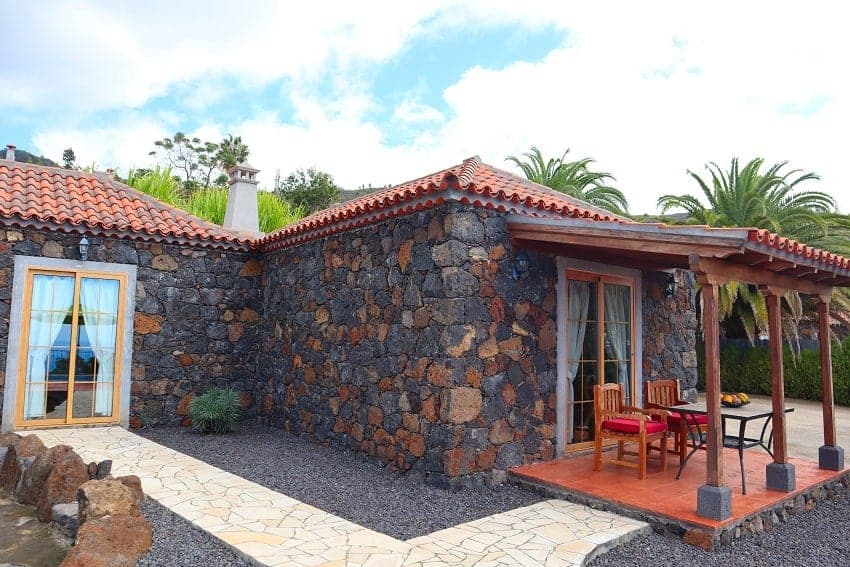Availability
Casa Las Gemelas 2
 1
1  2 2
2 2 





Accessible perfect all-rounder vacation home on La Palma with private pool in a quiet, sunny location. Also our recommendation for 2 families travelling together.
In one of La Palma’s best climate zones the twin houses Casas Las Gemelas are located. The vacation home accommodate up to 4 persons. Like two peas in a pod are the two natural stone clad cottages in prominent location.
Of course, every house has its private area, the two properties are clearly separated. A beautifully landscaped garden swirls around the areas of the respective private pools and the private barbecues with sweeping panoramic views of the Atlantic Ocean.
The living room is covered with a huge Canarian wooden roof – with traditional four sides! Two small chandeliers give the salon an elegant touch! The well equipped kitchen of course, comes with a dishwasher. Behind the kitchen guests find a brick barbecue. There are various dining options. A snack at the bar or for larger meals the dining table on the living room or outside on the terrace. Each House has 2 large bedroom with individual bathrooms.
Due to its central location In La Punta, the holiday homes are an optimal starting point for excursions on the island!
Facilities
- 1 Double Bed 180x200
- 2 Bathrooms
- 2 Double Bedrooms
- 2 Single Beds 110x190
- Baby Cot
- Barbecue
- Blender
- Coffee Maker
- Dishwasher
- Dryer
- Electric Heating
- Fridge / Freezer
- Garden
- High Chair
- Internet - WiFi
- Living Room with Integrated Dining Room
- Microwave
- Oven
- Parking Space
- Private Swimming Pool
- Radio
- Shower
- Sofa
- Stove
- Sun Umbrellas
- Sunbeds
- Terrace
- Toaster
- Washing Machine
- Weekly Linen & Towel Change
Internet
Location and Distances
Medical help
Check In / Check Out
Payment / Cancellation
Additional information
We are sorry, there are no reviews yet for this accommodation.
La Palma
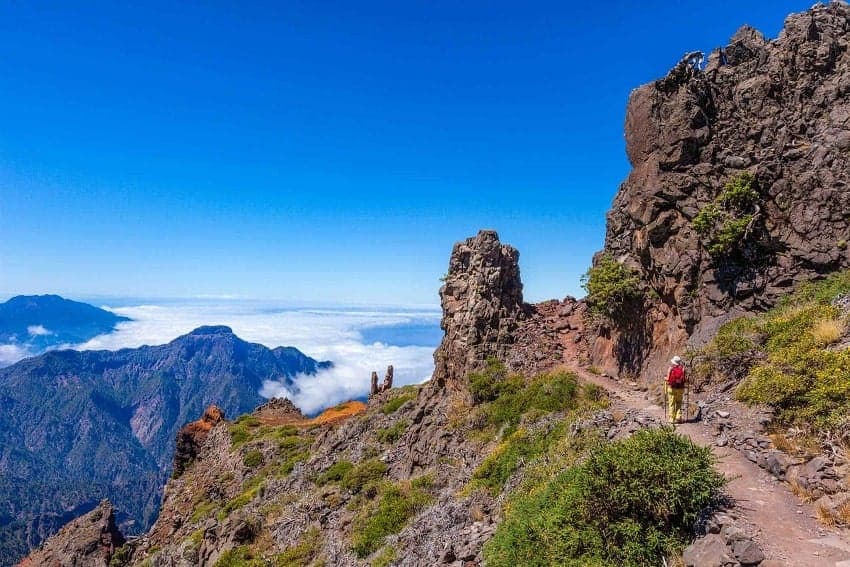
The island of La Palma offers breathtaking landscapes, remote beaches, imposing volcanoes, dense forests and incomparably starry skies.
With its 708 square kilometres, an elevation of 2.426m and its shape of a heart it is the most Western island of the Canary Island chain. Like every island in this archipelago, La Palma was created by volcanic activity. It is one of the youngest of the seven islands, dating back some 1.7 million years. The volcanic origin of La Palma is still clearly recognizable today, especially the southern part of the island with the dormant volcano Teneguía which last erupted in 1971, and offers interesting insights into its geological past.
The year-round mild climate with average temperatures between 18 and 27 degrees Celsius produce spring-summerlike weather as a result of the northeast trade winds.
This weather phenomenon is responsible for a pleasant subtropical climate and a rich green vegetation that prevails because of the humidity carried along in the trade winds. These moisture rich winds at certain times of the year also create a spectacular waterfall of clouds cascading down the central mountain faces and hence the nicknames Isla Verde – Green Island and Isla Bonita – Beautiful Island.
The unique geological structure of the island with its variety of vegetation zones and microclimates that are rarely found in the world on such a small area make this island a miniature universe. Each area of the island varies completely from another. In 1983 La Palma was declared a UNESCO biosphere reserve.
Another special feature of La Palma is the unique night sky. Due to its location in the Atlantic Ocean, sparse population, minimum light pollution and highest mountain peak Roque de los Muchachos 2.426m, the island was chosen as the location for one of the largest and modern observatories in the world.
The official population of the island is approximately 80,000 people. Traditional festivals such as the Bajada de la Virgen or Los Indianos carnival, famous far beyond the island’s borders, bear witness to the zest for life of the local people (Palmeros). Not only the geographical location, but also the numerous immigrants from Central and South America show a variety of Hispanic influences in island life, cuisine and cultural.
Read more...

